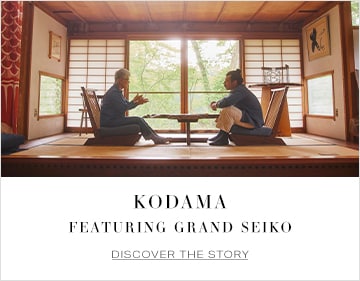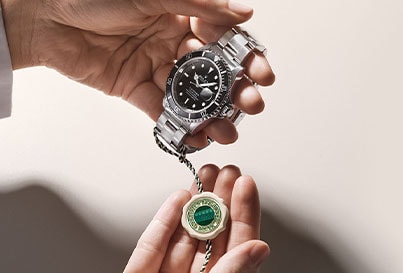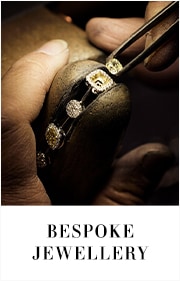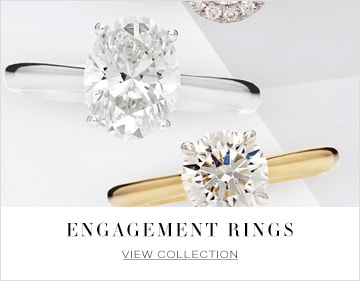-
Watches
By Category
Anytime. Anywhere.
By Collection
By Brand
-
Rolex
By Category
By Collection
- Rolex Certified Pre-Owned
- Pre-Owned & Vintage
-
Brands
Watch Brands
Jewelry Brands
-
Jewelry
By Metal
By Gemstone
By Collection
By Brand
-
Engagement
By MetalBy StyleBy Cut/ShapeBuild Your Ring
-
Wedding
By MetalWedding JewelryEditorial
- Sale
-
Sell Your Watch
Sell Your Watch
We will expertly assess your watch and offer you
a competitive and accurate valuation for the
watch you wish to sell to us.Free valuation by our experts
Unrivalled knowledge & expertise
Competitive prices offeredBrands we buy
A. Lange & SohneAudemars PiguetBlancpainBreguetBreitlingCartierIWC SchaffhausenJaeger-LeCoultreLonginesOMEGAPatek PhilippeRolexHeuerTudorVacheron Constantin - Stores
- Shop by Category
-
Watches
- Back
- Shop All Watches
- By Category
- Anytime. Anywhere.
- By Collection
-
By Brand
- Rolex
- Angelus
- Arnold & Son
- Berd Vay'e
- Blancpain
- Bovet
- Breitling
- BVLGARI
- Cartier
- DOXA
- Girard-Perregaux
- Grand Seiko
- Hamilton
- Hublot
- ID Genève
- IWC Schaffhausen
- Jacob & Co
- L’epee 1839
- Longines
- Luminox
- Nivada Grenchen
- OMEGA
- Oris
- Panerai
- QLOCKTWO
- Rado
- Raymond Weil
- Reservoir
- Speake Marin
- TAG Heuer
- Tissot
- Tudor
- Ulysse Nardin
- William Wood Watches
- WOLF
- Zenith
- Rolex
- Rolex Certified Pre-Owned
- Certified Pre-Owned
-
Brands
- Back
- View All Brands
-
A-Z
- Rolex
- Angelus
- Arnold & Son
- Berd Vay'e
- Bijoux Birks
- Blancpain
- Bovet
- Breitling
- BVLGARI
- Carlex
- Cartier
- CHANEL
- Di Modolo
- Dinh Van
- DOXA
- FOPE
- Girard-Perregaux
- Goshwara
- Grand Seiko
- Gucci
- Hamilton
- Hearts on Fire
- Hublot
- ID Genève
- Ippolita
- IWC Schaffhausen
- Jacob & Co
- J Fine
- L’epee 1839
- Longines
- Luminox
- Mappin & Webb
- Marco Bicego
- Massena LAB
- Mayors
- Messika
- Mikimoto
- Nivada Grenchen
- Nouvel Heritage
- OMEGA
- Oris
- Panerai
- Parmigiani Fleurier
- Paul Morelli
- Pasquale Bruni
- Penny Preville
- Persée
- Pomellato
- QLOCKTWO
- Rado
- Raymond Weil
- Reservoir
- Roberto Coin
- Royal Asscher
- Serafino Consoli
- Speake Marin
- Tabayer
- TAG Heuer
- Tissot
- Tudor
- Ulysse Nardin
- Uneek
- William Wood Watches
- WOLF
- Zenith
- Jewelry
- Engagement
- Wedding
- Sale
- Sell Your Watch
- Stores
- My Account
- Wishlist
- Store Finder
- Request an Appointment
- Help & Support
Can luxury watches save the world? By James Dowling
By Sarah Jayne Potter | 4 minute read
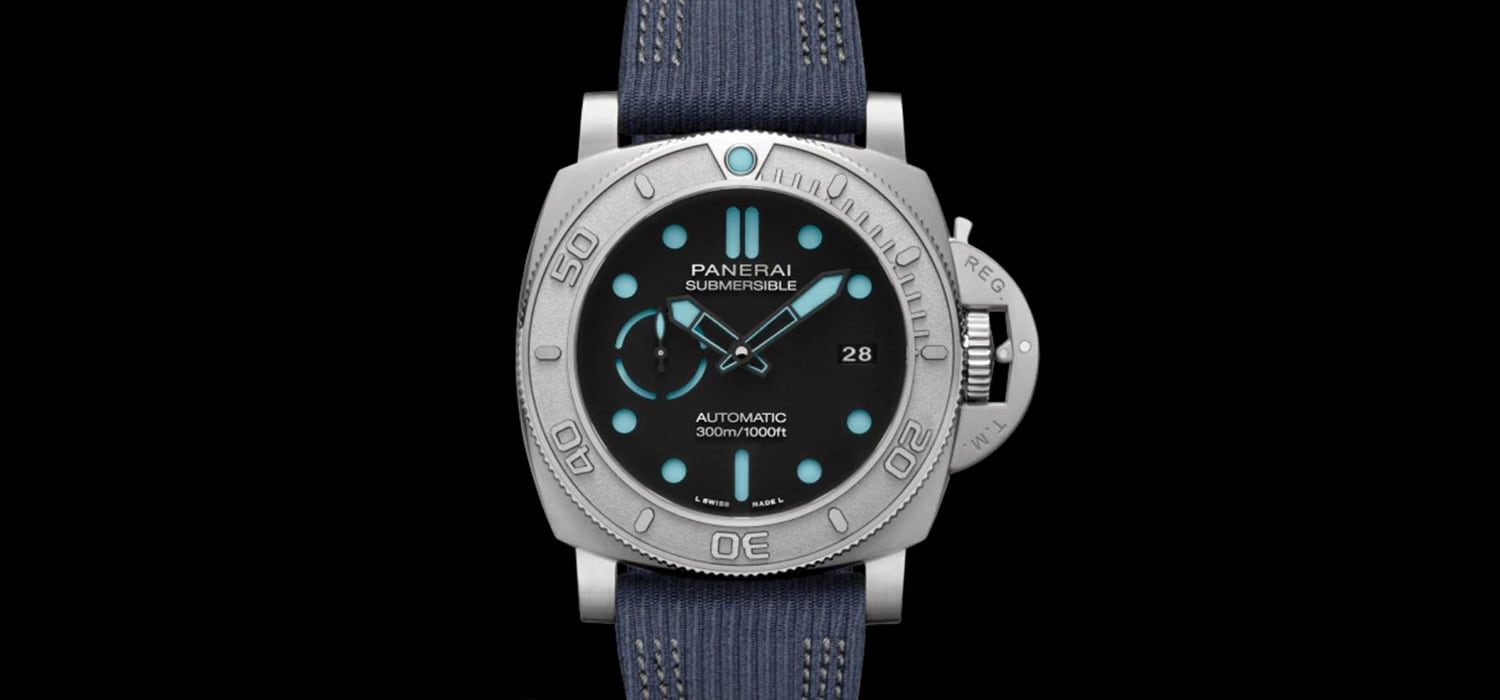
For decades, the most well-known slogan in the watch industry came from Rolex: ‘Men who guide the destinies of the world wear Rolex.’ But no longer. The most famous slogan now belongs to Patek, whose adverts all bear the legend, ‘You never actually own a Patek Philippe. You merely look after it for the next generation.’ The slogan emphasises something watch collectors have known for ever: with proper care, watches last a very, very long time.
Historically, watches were given, not bought, and the occasion of the gift was something worth celebrating. Not only was the watch treasured as a memento of the occasion, but it was likely to be the only watch that the owner possessed. Also, watches were heirlooms, passed down – like in the Patek advert – from one generation to the next.
All of this was only possible because watches are, unlike many purchases, extremely longlived. This means that a good watch is much more than an expensive luxury. It is also one of the ‘greenest’ purchases you can make. Let me explain …
Firstly, a mechanical watch, whether hand-wound or automatic, uses no batteries, thus avoiding a major source of pollution. Secondly, most good watches come from Switzerland, where the workshops which produce them are powered by renewable electricity, for the most part. The mountains and rivers of Switzerland produce almost two thirds of that nation’s electricity, while fossil fuel makes up an almost infinitesimal 2.5 percent.
Thirdly, the factories themselves are masters of recycling: for example, at the Les Acacias factory of Rolex, the water used in the factory is filtered and used to irrigate the plants and herbs on the roof garden, which are then used in the factory’s dining rooms. Fourthly, because the components and the watches themselves are actually quite small in scale, there isn’t a great deal of waste produced considering the size of the factories, and as the components are all metal, the waste produced during manufacture is recyclable.
A good example of this metal recycling can be seen in the Panerai Submersible Mike Horn watch, where the titanium case is made from recycled titanium and the strap (believe it or not) is made from three recycled plastic soft drink bottles. Other brands take their commitment to environmental awareness even further, by sponsoring environmental projects. Oris has produced a limited edition of its Aquis diver’s watch dedicated to research into the habits of the hammerhead shark, while Blancpain, maker of the iconic Fifty Fathoms diving watch, has also shown a long-term commitment to the preservation of the oceans.
For almost 30 years, the Audemars Piguet Foundation has poured funds into forest conservation. For a brand whose most famous watch, the Royal Oak, is named after a tree, this seems rather appropriate. However, forest conservation is about much more than just saving the rainforest: the AP Foundation has funded the preservation of mangrove swamps, replanted saplings in areas of southern France ravaged by wildfires, and even funded research on a 40-acre area of woodland in the Bronx. Sometimes, the tiniest of gestures can have a great impact. Girard-Perregaux, as part of the Kering empire, has signed up to all of the responsible commitments expected of a firm in the luxury industry, but they have also installed several beehives in the gardens of the company’s HQ. The recent massive decline in the bee population concerns scientists and farmers equally, making G-P’s initiative truly welcome.
The Charles Darwin Foundation is dedicated to preserving the natural flora and fauna of the Galapagos Islands, and IWC is one of the foundation’s leading sponsors. The purchase of any of their Galapagos Edition watches directly benefits the foundation. IWC has also become the first Swiss luxury watch brand to sign up to the Global Reporting Initiative standard. This provides an internationally agreed standard by which to judge a company’s sustainability. IWC’s first report was in 2018, and in the two years since it has achieved seven of the eight targets. The one outstanding has been added to a new set of eight targets, which it is dedicated to meeting by 2022.
A good Swiss watch is much more than a luxury item – it is an enduring product, manufactured ecologically, by companies who have worldwide environmental commitments. It may cross your mind, as you strap it on your wrist for the first time, that you have just made an ecologically sound purchase. Congratulations.
CREDIT: James Dowling writes for The Telegraph and Rolex’s in-house magazine.
